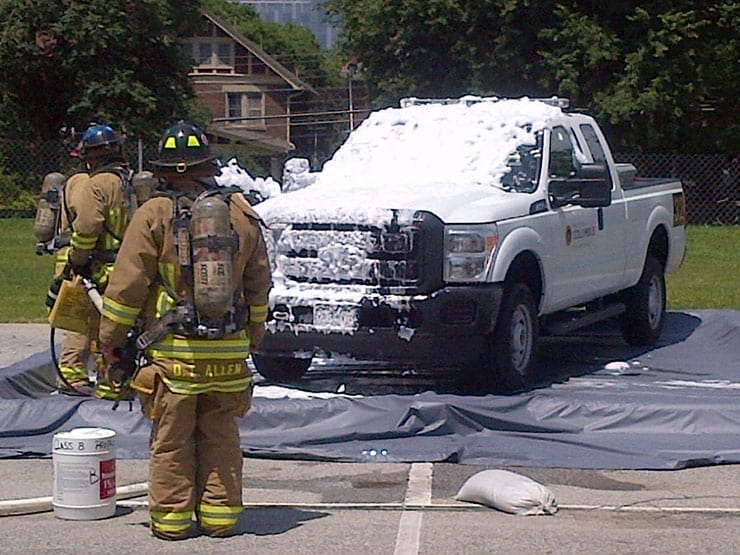Earlier this year, the National Urban Security Technology Laboratory (NUSTL) and the Environmental Protection Agency (EPA) demonstrated new technology developments that will enable more effective radiological decontamination at the Columbus, Ohio, Battelle Memorial Institute facility.
This demonstration was made possible through a partnership between NUSTL and EPA to research methods, best practices, and technologies for containing contamination and mitigating the hazard of radiation.
“It is vital for first responder agencies to understand the cleanup options available for events of all sizes,” explained NUSTL Radiological/Nuclear Response and Recovery (RNRR) Division Director Ben Stevenson. “When supporting local agencies and first responders for radiological response and recovery, it is important that S&T provide them with good scientific guidance and technology, but equally important that we connect them to experts and specialized federal assets that can support their operations and decision-making during an emergency.”
The Radiological Gross Decontamination and Waste Management First Responder Application project with the EPA is part of a NUSTL-managed research and development portfolio for S&T’s First Responders Group. It is focused on increasing local capabilities to respond to and recover from radiological incidents.
“These tools will also integrate into their activities as seamlessly as possible and into the activities of other responders who arrive later,” said EPA environmental scientist Sang Don Lee. “This may dramatically speed up and lower the cost of the response and recovery, and help assure the public that their community will be able to bounce back after one of these incidents.”
The demonstration, which included state, local, and federal responders; subject matter expert scientists from national laboratories; and industry representatives, demonstrated how to apply these technologies on a city-wide scale using equipment already on hand, while minimizing the effects of radiological contaminants.
“While any radiological incident will have specific response and recovery operations, understanding the available technology in the toolbox is important in advance of an incident to ensure an effective and efficient response and recovery,” said Stevenson.
Lessons learned from the event are being compiled and will be available in the near future in a report that will be posted to the firstresponder.gov website.
Source: DHS, adapted.
Editor Also Recommends:



